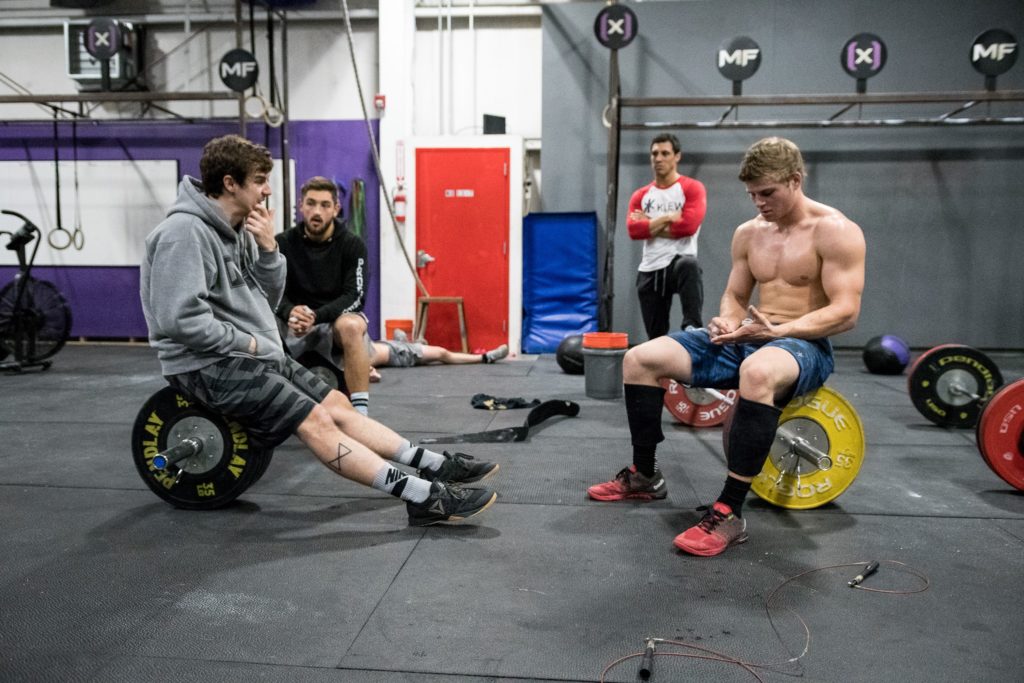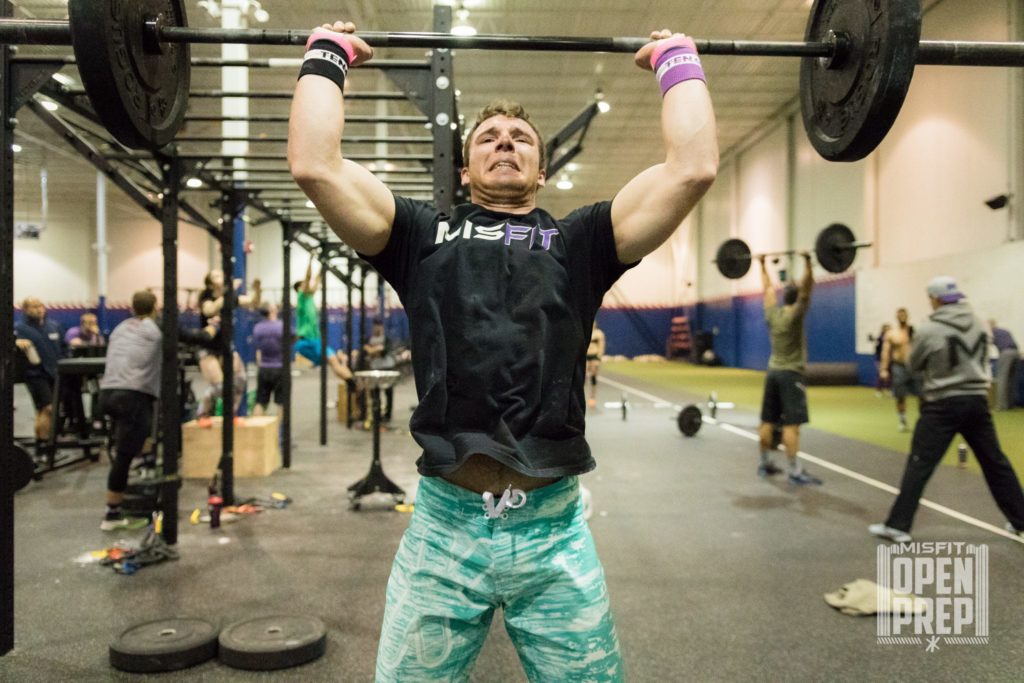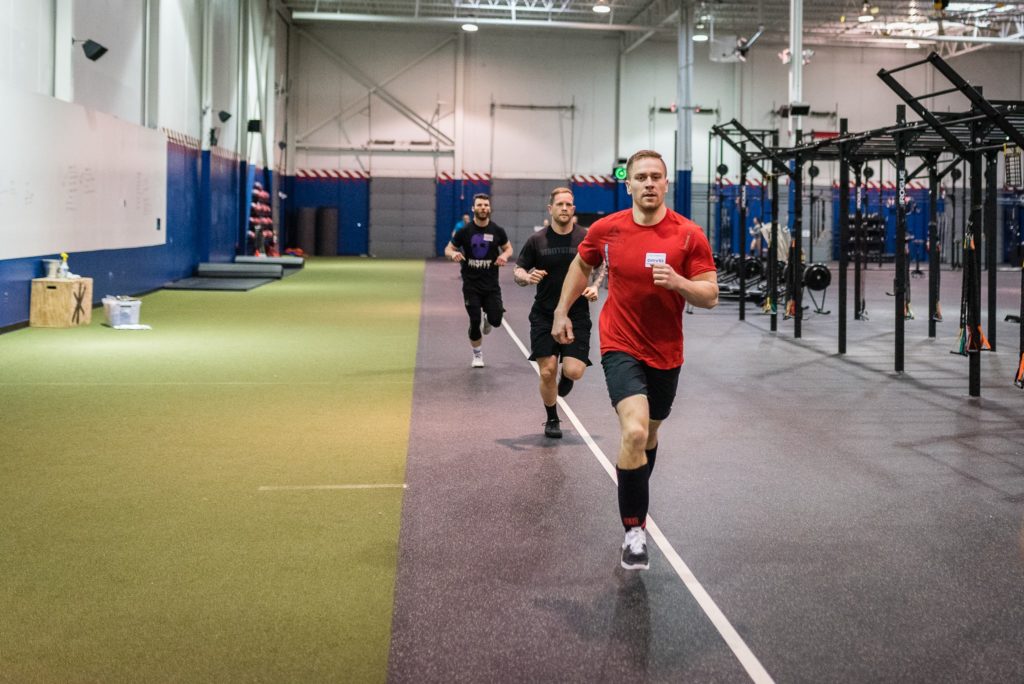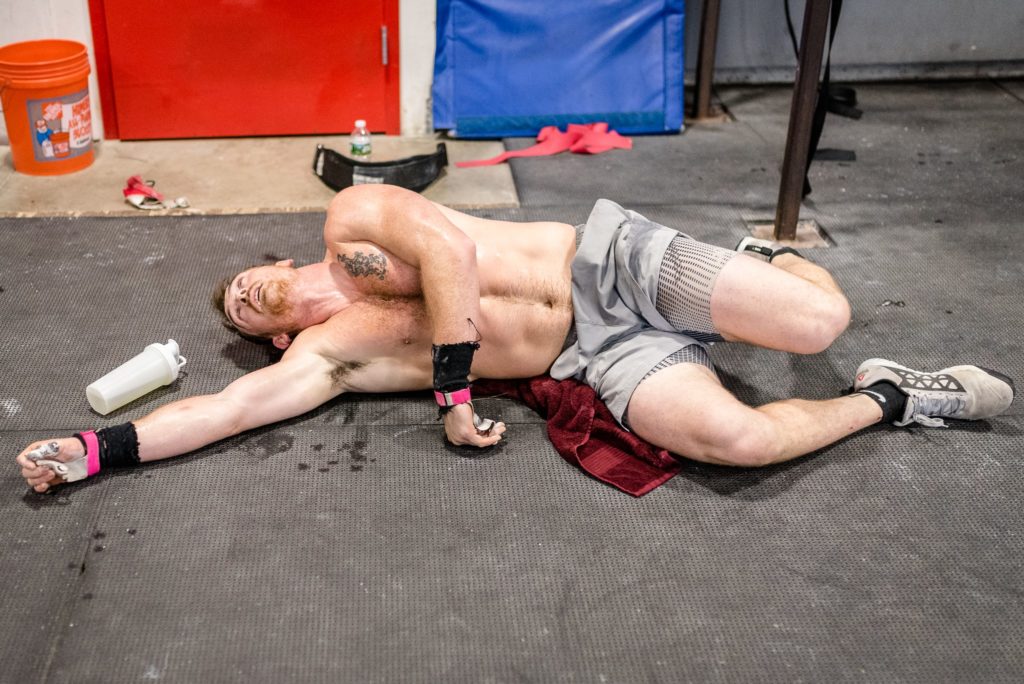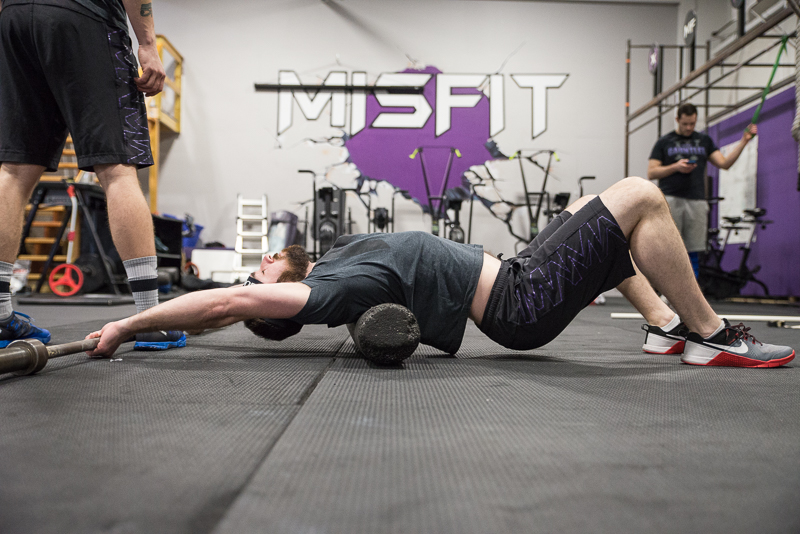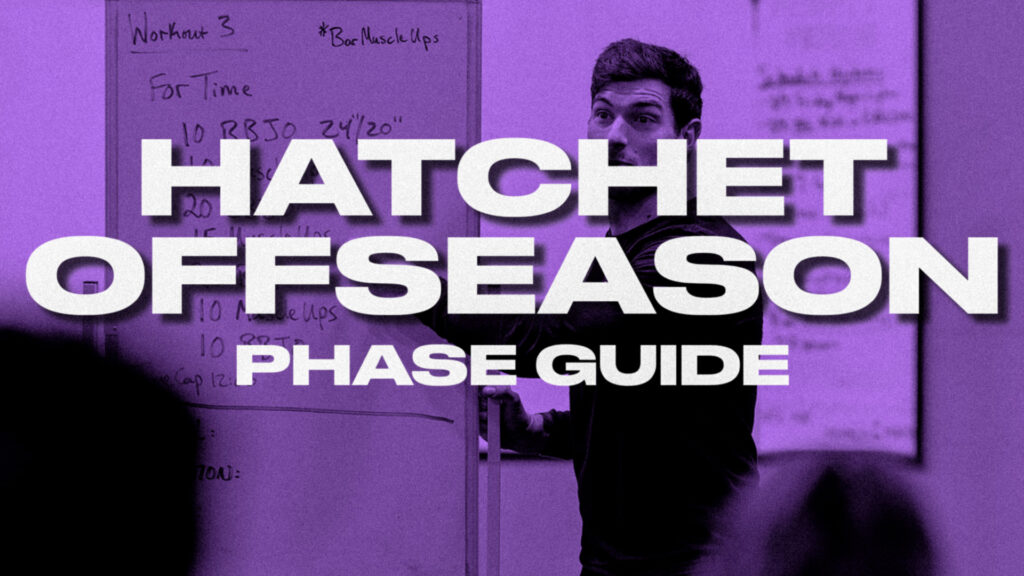The Bubble Athlete

The Bubble Athlete
The Tale of Matthew Sherburne
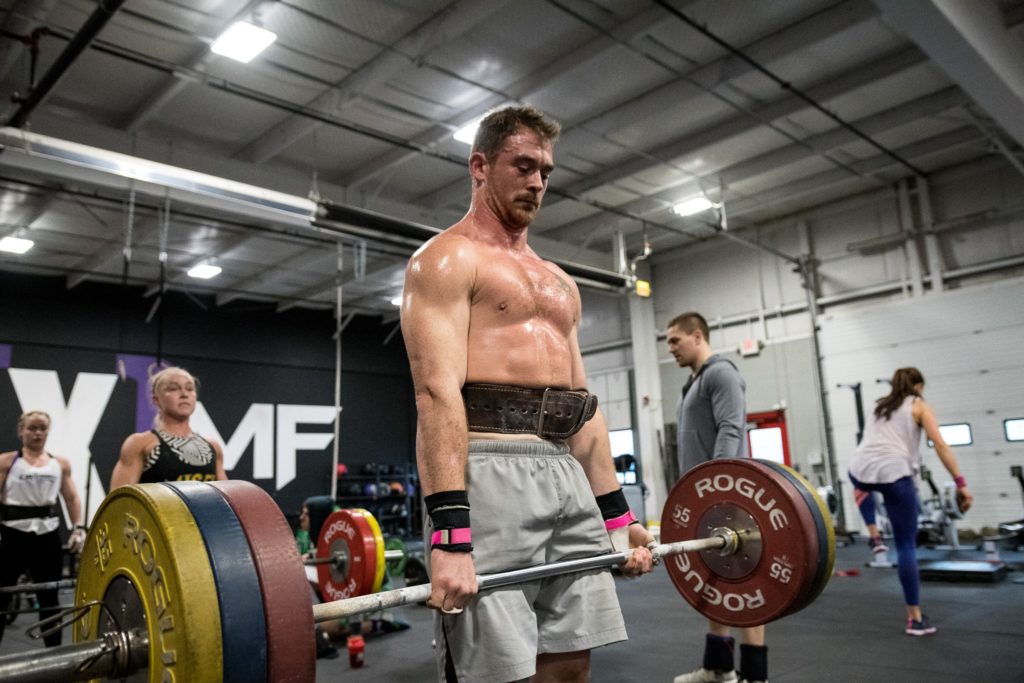
We took the scores from infamous coach and athlete from Misfit Athletics, Matthew Sherburne (“Sherb”) and analyzed his numbers. Sherb finished 37th in the most difficult region in the world last year, the North East. The questions we asked were:
“How many more reps per workout did Sherb need to qualify for Regionals?”
“What is a reasonable number of extra reps that could have been acquired in each Open workout?”
“What tactics could Sherb use to earn those extra reps?”
To put Sherb’s position into a larger perspective, here is where he would have finished in each region around the world:
Africa 9th
Asia 5th
Australia 19th
Canada East 16th
Canada West 5th
Central East 28th
Europe 44th (They take 30 athletes)
Latin America 3rd
Mid Atlantic 18th
North East 37th
North Central 32nd
NorCal 11th
North West 14th
South Central 22nd
South East 25th
SoCal 18th
South West 4th
Qualified in 11 of 17 possible regions, with an average placing of 18th.
In Sherb’s native region, the North East, he had the greatest distance to close to qualify for regionals with 17 places. Here is how he could have closed the gap:

Sherb needed 120 less points to slide into a top 20 spot, which breaks down to 24 points per workout on average. The average number of reps needed to close the gap in each workout was 14. (* In Workout 2, we say Sherb needed two reps because he was two Cleans short of the next time window, which would easily allow him to finish the Toes to Bar and Double Unders before reaching the 315lb bar)
Let’s assume Sherb’s fitness “is what it is” and he couldn’t do much to change his movement patterns once the Open had actually arrived (not true, but for the sake of argument). What tactics does this leave available to Sherb for improvement?
1. Transitions
2. Strategy
3. Coping Skills
How do these three tactics lead to improved scoring?
Transitions
The speed and deliberate nature at which you move from movement to movement is equally as important to the speed at which you cycle through your reps. The majority of CrossFit is a race, that means that any impedance to your progress of getting as far as possible through a list of tasks makes your score worse. Let’s take 16.5 for example. There are THIRTEEN transitions between Thrusters and Burpees. In the path we laid out for Sherb to get to regionals above, he needed a 24 second improvement to his score (which we call 24 reps). Take a moment and count out loud, “One Mississippi, Two Mississippi”. That’s it, that extra time spent deciding whether he was ready to pick up the bar or start his burpees could be 2 seconds x 13 transitions = 26 seconds. Now, we understand it’s easier said than done, but it can be done, period. Add that sped up transition to a slightly smoother burpee, which he does not currently possess, and you have success. On top of all that, I don’t believe that Sherb believed he had a shot at qualifying once week 5 rolled around, he was too many points out. There was nothing to fight for during his one and only go at 16.5. If the stakes were higher, his will to succeed may have pushed him a bit further than he was able to go. Eyes on the prize.
Regarding transitions in other workouts, I don’t need to explain how fast you needed to be between the light Power Snatches and Bar Muscle Ups in 16.3, you all saw the scores. And how long do you think you could actually stand around before picking up that 95/65lb barbell in 16.1? Nobody with a shot at making it to regionals would ever actually fail one of those light overhead lunges, so why did so many hesitate so much? Maybe it was due to their strategy?
Strategy
Back in the early days of our sport, workouts were about being shot out of a canon and holding on for dear life. That simply doesn’t work anymore for a piece beyond 2 minutes. There are always ways to intentionally break up movements to keep your heart from exploding out of your chest, to not reach failure due to muscle fatigue, and to keep “no reps to a minimum”. I like to call strategies in workouts “Micro Goals”. Micro Goals are checkpoints within each workout that help you keep pace with the clock. A simple example would be a micro goal that had you completing a round of a particular workout every 90 seconds. Another example would be keeping sets of power snatches to only five touch and go reps at a time in 16.3 with a very short break between each set. This could help you avoid holding on to a bar for too long, ruining your grip, and/or going beyond your aerobic capacity. Strategizing workouts and then actually sticking to the strategy is crucially important. It’s very easy to get caught up in the excitement early on and throw your game plan out the window, finding only minutes later that you wish you could go back in time and stick to your plan.
It’s likely Sherb could have made a better game plan for himself in several of the workouts. 16.5 was the only “gas pedal” piece, where anything short of unbroken would not cut it due to the nature of the Thruster and Burpee’s movement pattern. To be successful in 16.1-16.4 it took a very honest assessment of your strengths and weaknesses. It took planned breaks in workouts where others didn’t. It took knowing yourself through experiences gained along the entire year. You must learn to play your own game.
Coping Skills
You don’t need to know anything about Sherb’s scores to understand that it takes practice and skill to cope with the physical and mental stress that comes with competing in our sport. The two things we deal with most are Pain and Doubt. Working steadily through long range of motion usually under load will drive you to the upper limits of your aerobic capacity. That fucking hurts. There is no other way to explain it. Your body tells you through several different means that it wishes to exit the current state of work you have entered into. We know for a fact that the mind is able to push the body far beyond exhaustion, to even somewhat dangerous levels of exertion. Many competitors have experienced different states of shock following workouts, from vomiting to lack of blood flow to extremities, to stuttering and slurring words. I’ve seen it all. I’m not saying this is a great place for your body to be, but I am saying extraordinary results takes extraordinary performances.
How do these athletes push through the pain that keeps the average competitor on the outside looking in? There are countless coping skills and each athlete needs to find the ones that work for him/her and develop their ability to use them. These are not “one size fits all”. With that said, here are a couple examples:
“Perception of effort”: Top athletes know before going into it that the Open workout is going to hurt. This is not because it’s more difficult than the hundreds of training pieces they completed leading up to this moment but rather because they have to go that extra step or two into the pain cave. They accept the fact that is going to hurt, no, they truly accept it. You likely don’t. You might say “This is going to suck” because you know CrossFit hurts but that’s where it ends. You find yourself mid workout feeling bad for yourself and not enjoying the pain, just like you planned, and now precious seconds tick away as you stand there bent over trying to catch your breath, praying for the time to just disappear. Competitors actually embrace the pain and understand that if they are not feeling that way, there is more room to push. The pain is a welcomed experience and not something to be feared. Their perception of the effort they need to put forward will be acknowledged by the REWARD of pain.
“Chase the rabbit”: If you train with a group, and you should be, then you learn a lot about each other quickly. Once an Open workout is announced there is typically a group consensus on who is the likely candidate to have the top score. If that likely top scorer is not you, don’t volunteer to go before that person. Either go with, or after them. Going with that athlete will likely help drag you along and show you the pace you must keep in order to be competitive in a particular workout. Focusing on chasing the rabbit will allow you to block out the slew of dangerous ideas your brain is cooking up in an attempt to rationalize a reason to slow down or stop. The rabbit will help drag you forward and beyond what you thought you might be capable of. If you cannot go with the rabbit, study them. Watch the athlete you think will have the top score and download all the information possible to use while building your strategy. The rabbit might be forced to break things a certain way, the rabbit might go out too hot, the rabbit might absolutely crush the workout and you need to emulate them. Bottom line, use others around you to propel yourself forward.
There is so much literature out there on the psychology of sports and competition, if you’re not already a student of it and you’re looking to get to the next level, you should open a book. It will help you understand the process taking place in your brain each and every time you train and compete. I personally subscribe to the “two-self” approach. This is covered thoroughly in books like “Thinking Fast and Slow” by Daniel Kahneman, and “The Inner Game of Tennis” by Timothy Gallwey, among others. For my own athletics, mastering my inner dialog, and sometimes being able to turn it off, has been the single most helpful tool in all forms of competition.
Conclusions:
I’ll say it; It is possible that Sherb could have made regionals. He would have needed five flawless performances. He might have had one that was close (16.4) but others left his coaches and training partners desiring more. It’s unclear how much of each of the above topics played a role in keeping him out. The bottom line is that preparing for the Open takes more than just running through workout after workout, assuming that your game will come together with nothing but hard work. Honest self-assessment is crucial. We spoke a lot about Sherb and used his numbers to show how tight this race is but we could have easily plugged in your name and applied all the same ideas to you. The Open is up for grabs and is yours for the taking.

